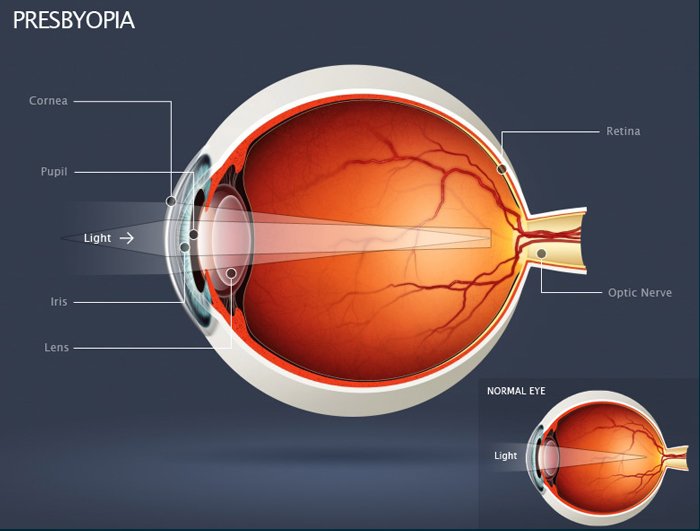
Astigmatism is the optical term for more than one point of focus. It occurs when the surface of the cornea or crystalline lens is not spherical. Light from an object does not focus exactly on the retina but at two separate points. An astigmatic eye has curves that are steeper in one direction than the other. An example of this could be where the cornea is not spherical and shaped more like a rugby ball than football – of course this is not noticeable by just looking at someone’s eyes.
As a result, the eye is unable to focus a point or object into a sharp focused image on the retina.
Myopia is the term used to define short sightedness. Light from a distant object forms an image before it reaches the retina. This could be because the eye is too long, or the cornea or crystalline lens is too strong.
A myopic person has clear vision when looking at objects close to them, but distant objects will appear blurred.
Myopia is easily corrected by using prescription glasses or contact lenses specifically designed to counteract the effect. A concave lens (minus powered) is placed in front of a myopic eye, moving the image back to the retina and clarifying the image.


Hyperopia means long sight and is where the image of a nearby object is formed behind the retina. This could be because the eye is too short, or the cornea or crystalline lens does not refract the light enough.
A hypermetropic person may have blurred vision when looking at objects close to them, and clearer vision when looking at objects in the distance. By placing a convex (plus powered) lens in front of a hypermetropic eye, the image is moved forward and focuses correctly on the retina.
Presbyopia describes the condition where the eye exhibits a progressively diminished ability to focus on near objects. It is a perfectly natural condition that eventually affects everyone over 40, but because the effects are gradual, you may not notice that anything is wrong with your eyesight initially.
However, as the condition progresses, you may find yourself struggling to read small print, your phone or books unless they are held at arm’s length. With presbyopia, there are many factors that affect the eyes ability to accommodate over varying distances; causing light (and therefore images) to be focused behind the retina. This leads to the eyesight becoming blurred. Presbyopia can be easily corrected with glasses or contact lenses with a combination of options such as, varifocals, bi-focals, separate glasses or mono vision for contact lenses only.




